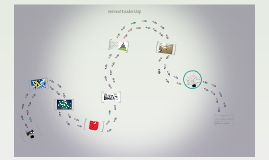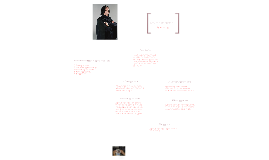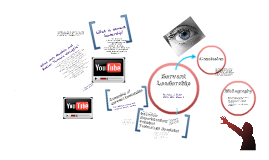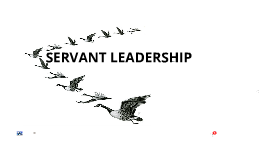Servant Leadership Presentation
Transcript: S Servant Leadership Presented by: Tameka Vaught, M.S. Dr. Fort Chancellor Emeritus & Endowed Professor 09/28/17 1. Colleagues will understand & define Servant Leadership. 2. Colleagues will understand the 10 Characteristics of Servant Leadership as defined by Robert Greenleaf. 3. Colleagues will become familiar with the work of Robert Greenleaf. 4. Colleagues will identify different Servant Leaders. 5. Colleagues will be able to compare and contrast various research approaches to Servant Leadership. 6. Colleagues will examine the model of Servant Leadership. 7. Colleagues will evaluate servant leadership to their own individual leadership characteristics. 8. Colleagues will compare and contrast the strength & weakness of Servant Leadership. Learning Objectives Learning Objectives Greatness! Greatness! King's "Drum Major Instinct" sermon, given on 4 February 1968, was an adaptation of the 1952 homily ‘‘Drum-Major Instincts’’ by J. Wallace Hamilton, a well-known, liberal, white Methodist preacher. King encouraged his congregation to seek greatness, but to do so through service and love. King concluded the sermon by imagining his own funeral, downplaying his famous achievements and emphasizing his heart to do right. King's "Drum Major Instinct" sermon, given on 4 Februa... WHAT IS SERVANT LEADERSHIP? According to Robert Greenleaf (1977) According to Robert Greenleaf (1977) Servant Leadership is....... Servant leadership can be defined as, "the natural feeling that one wants to serve and to serve first" (Greenleaf, 1977, p 27). Northhouse (2016) emphasizes servant leadership as: Attentiveness Empathy Nurturing Servant leaders put followers first, focus on empowerment, and maximizing followers full potential (Northhouse, 2016). Servant Leaders are ethical and purpose is to serve the greater good of their community or organization (Northhouse, 2016). Servant Leadership is....... Robert Greenleaf's Servant Leadership approach, derived from a previous book he read called, Hermann Hesse's Journey to the East (Bennis, Covey, Wheatley, & Bogle, 2002). Main points: A servant man, named Leo completed menial chores, but sustained the group with his spirit and songs. He disappeared and the group was lost. He later appeared again and was actual a noble leader in his community. Purpose: Title does not make you a leader. However, to be a leader you must be a servant first. Hermann Hesse's Journey to the East WHO IS ROBERT GREENLEAF? What was his contribution to the world of leadership? WHO IS ROBERT GREENLEAF? Review these pictures and identify who are servant leaders. Identify the servant leaders.... What characteristics showcase a servant leader? Greenleaf's Ten Characteristics of Leadership E How has Servant Leadership evolved over the years? Researchers have started, "examining the conceptual underpinnings of servant leadership in an effort to build a theory about it" (Northhouse, 2016, pg 229). New research has begun to add new variables to assist in better analyzing the characteristics of a servant leader. For example....... Known contributors to Servant leadership Southwest Airlines -Largest Domestic Airline in the United States. Net income: $746 million Net income, excluding special items: $748 million Quarterly record revenue passengers carried: 34.0 million Quarterly quarter record RPMs: 34.4 billion Quarterly record load factor: 85.6% Quarterly record total operating revenues: $5.7 billion Retrieved from Southwest Media: https://www.swamedia.com/pages/corporate-fact-sheet Where is servant leadership implemented? Opened more than 30 years ago. The Men's Wearhouse mission has been to maximize sales, provide value to our customers, and deliver top-quality customer service while still having fun and maintaining our values. Trust and respect are the cornerstones of our philosophy; our collective honesty, sincerity, integrity, responsiveness, authenticity, mutual goodwill, and caring for each other will allow us individually and as a company to achieve maximum success. Doug Ewert- Current President and CEO of Men's Wearhouse Former CEO and founder - George Zimmer Retrieved from: https://www.menswearhouse.com/corporate-governance Men's Wearhouse R Explanation of Servant Leadership model. The servant leadership model was developed by: Liden, Wayne, Zhao, and Henderson (2008) The model includes 3 components: Antecedent (preexisting) conditions: Servant leader behaviors Leadership Outcomes The model suggests that based on the culture of the organization, the leader's attributes, and the receptiveness to servant leadership it is likely to improve the outcomes at all levels: societal, individual, and the organization (Northhouse, 2016). Model of Servant Leadership Attitude Reflects Leadership LET'S WATCH THIS VIDEO AND DISCUSS Why did I play this video? What about this video does/does not connect to the characteristics of a servant leader? V Servant Leadership Selflessness is a central component of the leadership process. A N

















